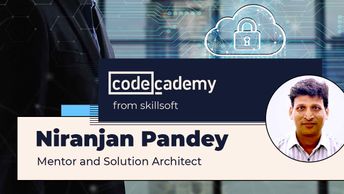In this course, you'll learn about the essential components involved in solutioning CloudOps projects, the layered approach of managing enterprise CloudOps applications, and the role-based and layer-based CloudOps solutioning architectures. You'll examine the role of different types of cloud engineers in providing logical and physical architectures for the CloudOps solutioning process. You'll also learn about the role of the Cloud Governance Framework in providing comprehensive cloud-centric governance for each phase of the cloud transformation life cycle used in CloudOps. Next, you'll explore the RACI Matrix of Roles for each CloudOps solutioning stakeholder, the Measures and Metrics involved in solutioning CloudOps strategy, and the anatomy of Cloud Service Agreements. Finally, you'll learn about the logical CloudOps architecture and prominent CloudOps solutioning tools for designing, planning, architecting, and implementing CloudOps solutioning.
| Objectives |
|---|
CloudOps Solutioning Strategies
|


